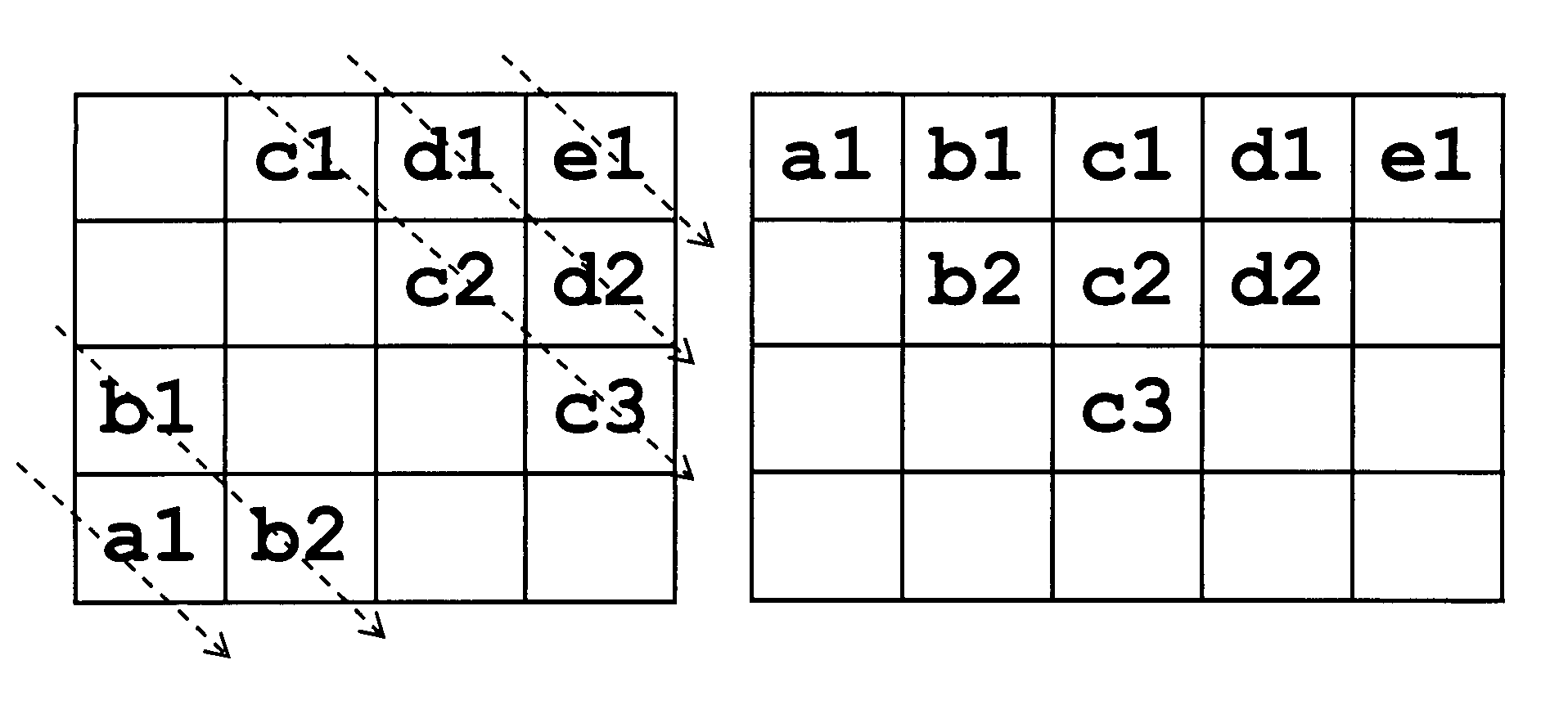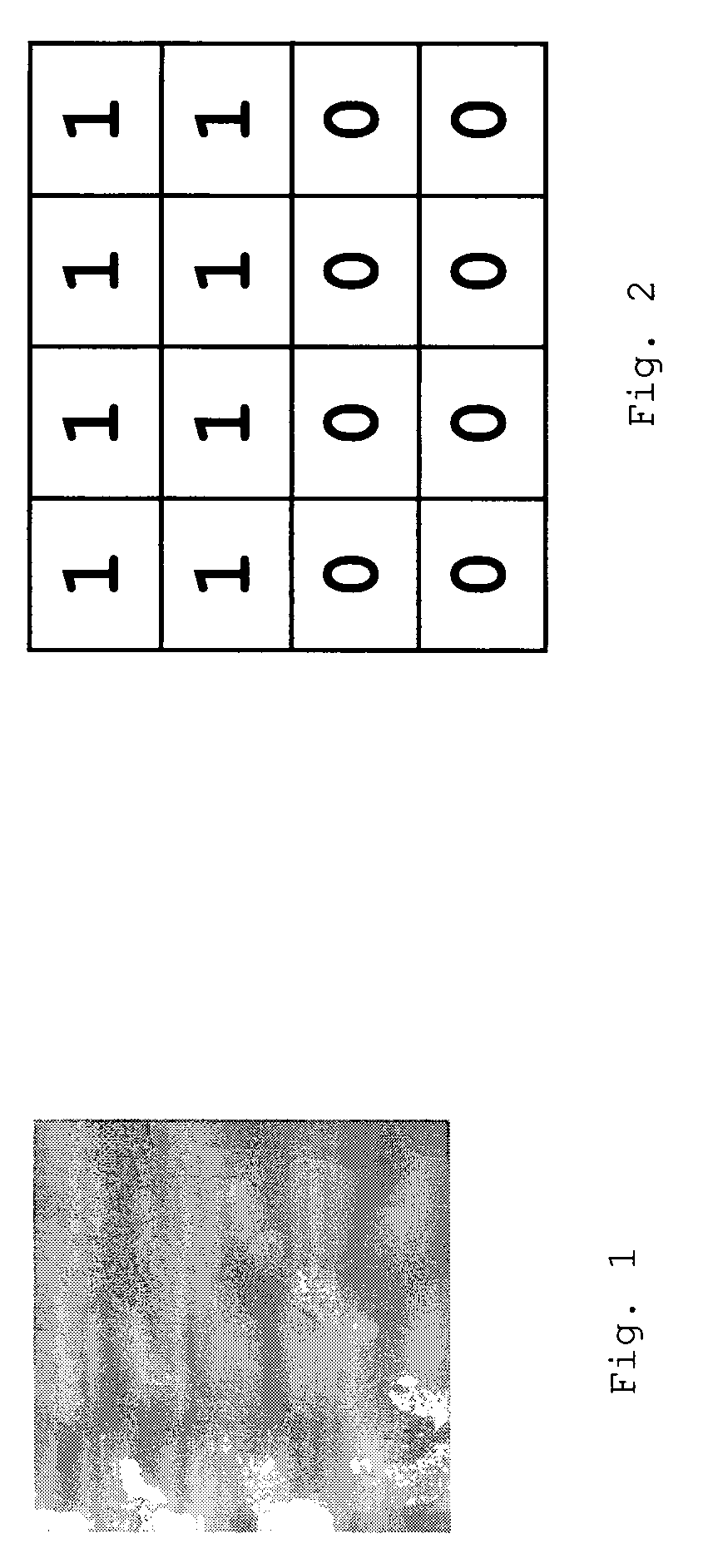Texture-pattern-adaptive partitioned block transform
a partition block and pattern technology, applied in the field of encoding images, can solve problems such as deteriorating visual quality, and achieve the effect of improving encoding performance and ensuring the effect of encoding efficiency
- Summary
- Abstract
- Description
- Claims
- Application Information
AI Technical Summary
Benefits of technology
Problems solved by technology
Method used
Image
Examples
Embodiment Construction
[0035]The invention may be realized on any electronic device comprising a processing device correspondingly adapted. For instance, the invention may be realized in a television, a mobile phone, a personal computer, a digital still camera, or a digital video camera.
[0036]There is an exemplary embodiment of the method for encoding an image block of an image in which said image block comprises a number of rows and a number of columns and said method comprises the step of encoding a first subset of pixels resulting from partitioning at least a portion of the image block according to a current texture-pattern-adaptive partition associated with a current texture-pattern into said first sub-set of pixels and at least a second sub-set of pixels. In said exemplary embodiment the step of encoding the first subset comprises using a first and a second texture-pattern associated invertible mapping for generating a meta-sequence of pixel sequences wherein, either, the number of pixel sequences in...
PUM
 Login to View More
Login to View More Abstract
Description
Claims
Application Information
 Login to View More
Login to View More - R&D
- Intellectual Property
- Life Sciences
- Materials
- Tech Scout
- Unparalleled Data Quality
- Higher Quality Content
- 60% Fewer Hallucinations
Browse by: Latest US Patents, China's latest patents, Technical Efficacy Thesaurus, Application Domain, Technology Topic, Popular Technical Reports.
© 2025 PatSnap. All rights reserved.Legal|Privacy policy|Modern Slavery Act Transparency Statement|Sitemap|About US| Contact US: help@patsnap.com



